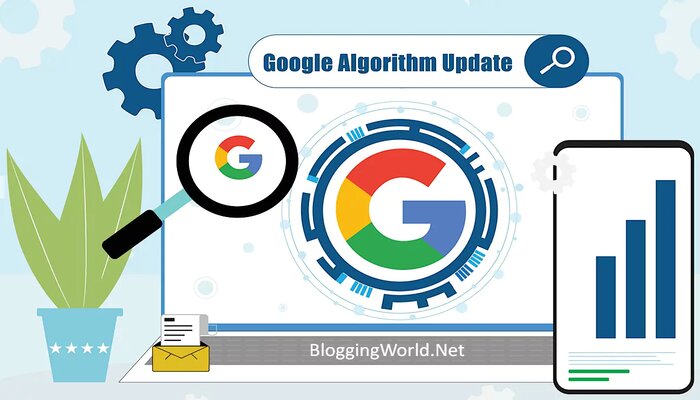Google frequently updates its search algorithms to enhance user experience and provide the most relevant results. Each update impacts SEO strategies, requiring webmasters and content creators to adapt. In 2025, Google’s latest algorithm changes continue to prioritize high-quality content, user experience, and technical optimizations. Understanding these updates and their implications is crucial for maintaining search rankings and visibility. This article explores how Google’s latest algorithm updates affect SEO strategies and how businesses can adapt.
Table of Contents
1. Increased Focus on User Experience (UX)
Google’s recent updates emphasize user experience more than ever. Core Web Vitals, which measure page speed, interactivity, and visual stability, play a key role in rankings.
Key Adjustments:
- Optimize website loading times to improve performance scores.
- Enhance mobile-friendliness and responsive design.
- Reduce intrusive pop-ups and interstitials that disrupt user experience.
2. AI and Machine Learning in Search
Google continues to refine its AI-driven algorithms, such as RankBrain and MUM (Multitask Unified Model), to better understand user intent and deliver more relevant search results.
SEO Adaptations:
- Focus on search intent by creating content that directly answers user queries.
- Use AI-powered keyword research tools to identify trending search patterns.
- Optimize for semantic SEO, using natural language and related terms.
3. Greater Emphasis on E-E-A-T (Experience, Expertise, Authoritativeness, Trustworthiness)
Google has enhanced its focus on E-E-A-T, particularly for YMYL (Your Money, Your Life) content such as finance, health, and legal topics.
How to Adapt:
- Publish content created by subject matter experts.
- Provide credible sources, citations, and verifiable information.
- Improve website trust signals, such as security certificates and author bios.
4. Content Quality and Relevance Prioritization
Google’s updates penalize low-quality, duplicate, or AI-generated content that lacks originality and value.
Best Practices:
- Create in-depth, well-researched, and unique content.
- Avoid keyword stuffing and focus on user engagement.
- Regularly update older content to maintain relevance.
5. Changes to Link-Building Strategies
Link-building remains important, but Google now prioritizes link quality over quantity.
Updated Approach:
- Focus on earning natural, authoritative backlinks.
- Avoid spammy or low-quality link-building practices.
- Utilize digital PR and guest posting on reputable sites.
6. The Rise of Visual and Video Search Optimization
With improvements in Google Lens and video indexing, multimedia content is becoming more significant for SEO.
How to Optimize:
- Use descriptive filenames and alt texts for images.
- Optimize video content with transcripts and metadata.
- Leverage structured data to enhance search visibility.
7. Local SEO Enhancements
Google’s local search updates improve how businesses appear in location-based queries, emphasizing proximity and reviews.
Local SEO Tactics:
- Optimize Google Business Profile with accurate information.
- Encourage and manage online customer reviews.
- Use local keywords and geo-targeted content.
8. The Importance of Structured Data and Schema Markup
Google’s latest updates favor well-structured data that helps search engines understand page content better.
Implementation Tips:
- Apply schema markup for articles, products, and FAQs.
- Use breadcrumb navigation to improve site structure.
- Validate structured data with Google’s Rich Results Test.
9. The Shift Towards Zero-Click Searches
More search queries are being answered directly on Google’s SERP through featured snippets and knowledge panels.
SEO Strategy Adjustments:
- Optimize for featured snippets with concise and clear answers.
- Use structured lists and question-based formatting.
- Ensure website content provides additional value beyond snippet results.
10. Mobile-First Indexing as a Standard
Google now fully prioritizes mobile-first indexing, making mobile optimization non-negotiable.
Best Mobile SEO Practices:
- Ensure mobile-friendly design with fast loading times.
- Optimize for voice search with conversational content.
- Use AMP (Accelerated Mobile Pages) where applicable.
11. Voice Search Optimization and Conversational Queries
Voice search is growing due to smart assistants like Alexa, Siri, and Google Assistant.
Optimization Strategies:
- Use long-tail keywords that reflect natural speech patterns.
- Optimize for FAQ-style content and direct answers.
- Focus on local SEO, as many voice searches have location-based intent.
12. Measuring and Analyzing SEO Performance
SEO is an ongoing process, and tracking performance is critical to adapting strategies effectively.
Essential Tools:
- Google Analytics for traffic insights.
- Google Search Console to track keyword rankings.
- Ahrefs and SEMrush for competitor and backlink analysis.
- Heatmaps and user behavior tools for UX improvements.
Conclusion
Google’s latest algorithm updates demand a refined, user-centric approach to SEO. Focusing on user experience, high-quality content, AI-driven search intent, and structured data can help websites stay ahead. By continuously monitoring changes, adapting strategies, and prioritizing authenticity, businesses can maintain strong search rankings and sustain long-term SEO success in 2025 and beyond.








